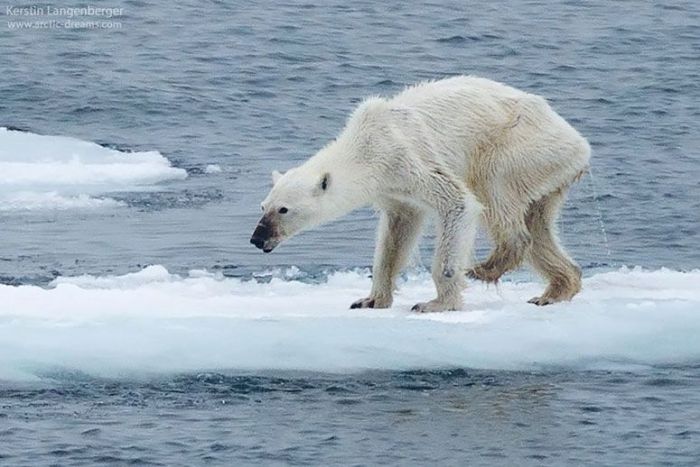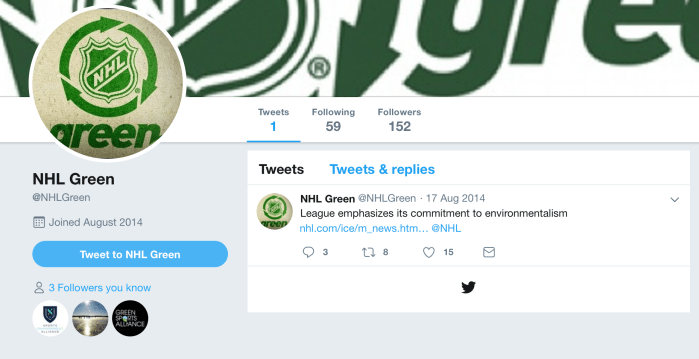*Cross-posted on The Rabbit Hole*
Viacheslav Fetisov won two Stanley Cups with the Detroit Red Wings in 1997 and 1998; and, he has a wheel barrow full of gold medals to his name from the Olympics and various World Championships. Today, he is the United Nations Environment Patron for the Polar Regions. This past summer, Fetisov announced that he, along with the UN Environment Program, the National Geographic Society, the Vatican and the Arctic Council nations, would be holding “The Last Game” in April 2019 to highlight the interconnectedness of our environment and the sustainability of hockey as a game. In a speech that Fetisov gave at the Third Annual Ambassadors dinner environmental issues, he stated:
We will organize the game so it gets the most attention and organize it in the most responsible way – so it has minimal effect on the North Pole and respects our planet.
This game is just a symbol. But it is a symbol of our concern, our commitment and the start of our cooperation – wherever we are – to work together to save our world.
Images of starving polar bears have become emblematic of global warming and yet the reality remains that we haven’t done a lot (as a global society) to change our course. So is holding a hockey game to amplify the issue going to any more impactful?

In Jay Johnston and Adam Ali’s analysis of global warming and hockey, they critique outdoor games such as the Heritage Classic as paradoxical:
[T]he Heritage Classic games also become environmental market opportunities where the NHL partners with sustainability organizations such as Green Sports Alliance and “innovative” energy companies such as Constellation to highlight its commitment to green practices. This couples the “naturalness” of the Outdoor Heritage Classic with the promotion of environmental stewardship in order to protect frozen lakes and ponds to ensure possible opportunities for future outdoor hockey. These narratives guise the fact that there is a tremendous amount of control exercised over the creation of the event….The myth of protecting and paying tribute to outdoor hockey is made possible, ironically, through the very practices of environmental degradation that jeopardize its future. (emphasis added, p.263)
Thus, in our attempt to protect and highlight the fragility of Arctic ice we will visit, trample, build, and skate on that ice. Fetisov claims that the game will be organized so that it garners as much attention as possible and has “minimal effect on the North Pole,” but minimal effect is an admission that this game will require some form of “taking” from the environment. For example, flying players and engineers to the Arctic for this game contributes to the very problem it is trying to extinguish.
The NHL has been touted as a leader in the sports industry with respect to environmental sustainability because it has produced two reports to date, and they often send a representative to high-level summits. In truth, the NHL has done a really good job of greenwashing its activities. Now, that’s not a judgement of individual motives or politics inside the League because there may very well be individuals who care deeply about global warming; however, the League’s green activities remain incrementalist as best. We have passed the point where more efficient stadium lighting is “good enough” to solve the problem at hand; yet, the League continues to expand (this time to Seattle), again requiring more consumption from the very environment it claims to want to protect. The adage of “Reduce. Re-use. Recycle.” is presented in the order in which we are supposed to act; it’s not just fun alliteration. Unfortunately, we have been told our entire lives (or at least my entire life) that recycling was “good enough” to save the planet. We were wrong.

Is this what leadership looks like?
In 2015, I made a call for the NHL to reduce the number of games on the schedule to show how committed it was to environmental sustainability. A reduction of four games from the schedule would reduce the NHL’s overall consumption by 12,240 metric tons of CO2 emissions and almost 7.5 MILLION gallons of water (this is according to the math provided in the 2014 NHL Sustainability report). It’s a move that would have little impact on the NHL regular season itself but would be really significant for both the environment and the sports industry. It would set a precent and demonstrate leadership but reducing consumption. However, this symbolic show of solidarity also flies in the face of this idea that we can buy and innovate ourselves towards a new future. Divesting support from the fossil fuel industry would also be a really powerful statement, but that’s a discussion for another day (*ahem* Esso Cup, Esso Great Hall at the Hockey Hall of Fame).
So the question is: Will one more hockey game make a difference? Will “The Last Game” be the game that puts us on a new path or are we just adding unnecessary stress on the Arctic? It would be really nice if the game next April really is the straw that breaks the proverbial camel’s back, but if emaciated polar bears have not forced us to make drastic changes I am doubtful that a few people skating around on an ice flow will have much of an impact. Sport keeps looking for more ways to contribute to environmental sustainability, and I whole-heartedly support this passion. But, I think our efforts are misguided because we keep trying to do something — print t-shirts, give away re-useable bags, hold an event — when the reality might be that doing less sport (or being more selective about it) would be the kindest thing we could do for Mother Nature. I love a hockey game as much as anyone, but personally, I think this is one we could do without.
UPDATE: The game has been pushed back to April 2020.

The date for the event is incorrect.
It is not to take place in 2019, but in fact 2020.
Thanks Troy! I see that they have pushed the date back so I’ll make that update.